An overview of Bullmastiff colors and their genetics.
| Em/Em melanistic mask | ky/ky normal | kbr/- brindle |
| Ay/Ay sable | 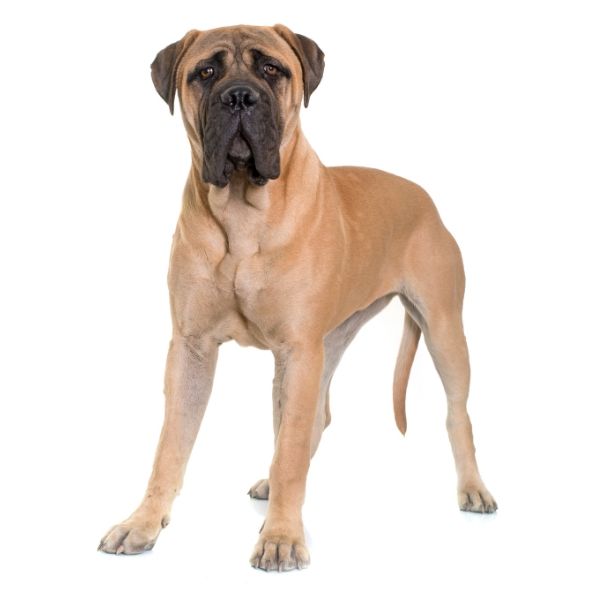 sable “fawn, red“ | 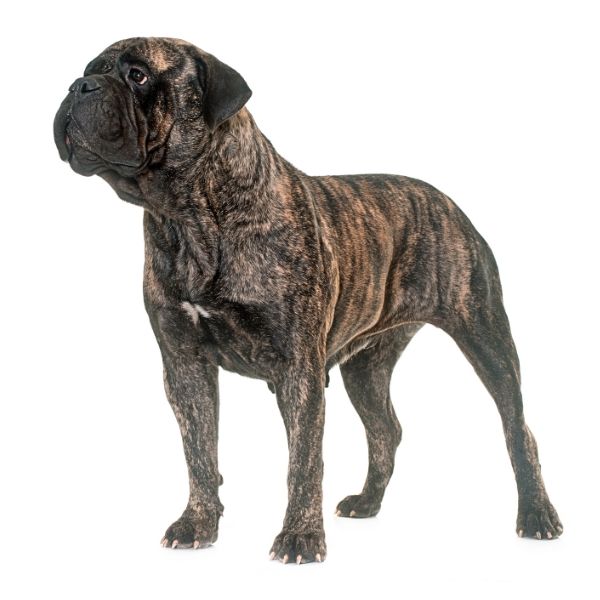 brindle |
Bullmastiff Color Overview
The standard patterns in the Bullmastiff:
Sable
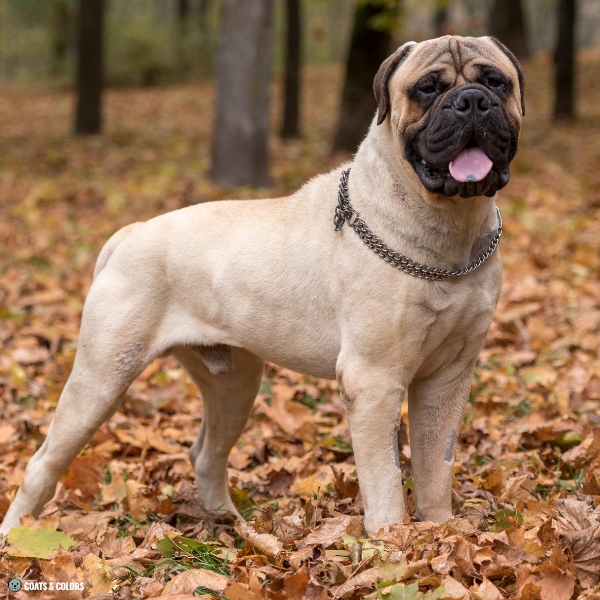
Bullmastiffs have a clear sable pattern (ky/ky Ay/Ay) in shades from light fawn to deep red.
They always have a black mask (Em/Em).
| E LOCUS | K LOCUS | A LOCUS |
|---|---|---|
| Em/Em | ky/ky | Ay/Ay |
Brindle
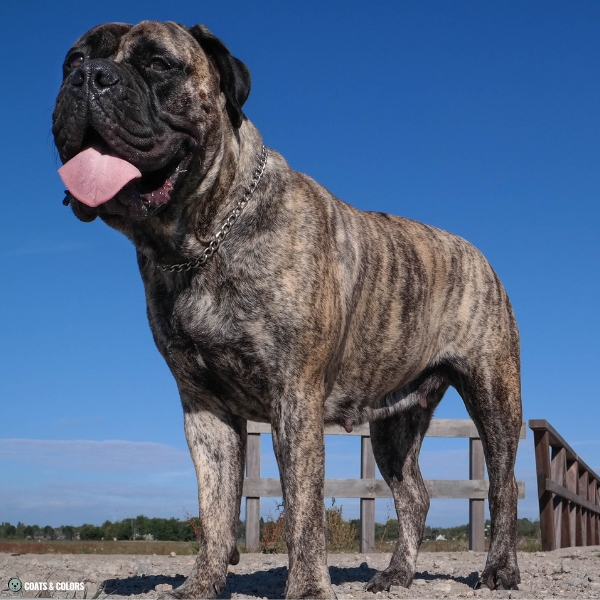
Brindle Bullmastiffs also have a clear sable pattern (Ay/Ay) and a black mask (Em/Em).
But they also have black brindle striping on top of their pattern (kbr/kbr or kbr/ky).
| E LOCUS | K LOCUS | A LOCUS |
|---|---|---|
| Em/Em | kbr/- | Ay/Ay |
Bullmastiff Color Genetics Summary
Bullmastiffs only come with a clear sable pattern which can be brindled.
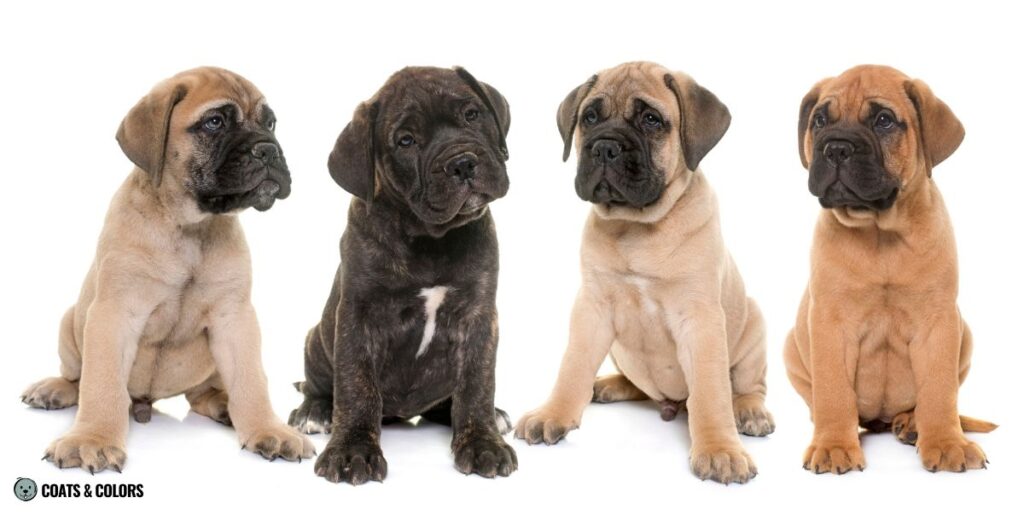
However, these are the color traits that occur in Bullmastiffs:
| E-LOCUS | Em = melanistic mask E = normal pattern (rare) |
| K-LOCUS | kbr = brindle ky = normal pattern |
| A-LOCUS | Ay = clear sable Ays = shaded sable (rare) |
| B-LOCUS | B = black b = brown (rare) |
| D-LOCUS | D = normal pigment |
| S-LOCUS | S = no spotting |
| M-LOCUS | m = non-merle |
Bullmastiff Colors
The variety of color in Bullmastiffs is quite limited.
Eumelanin
In theory, Bullmastiffs should be fixed for non-diluted black eumelanin (B/B D/D).
However, a very, very small number of Bullmastiffs may carry for brown eumelanin (b)[3].

Phaeomelanin
The AKC lists fawn, red fawn and red as standard colors in a Bullmastiff’s sable pattern. Red intensity in Bullmastiffs can range from a whitish tan to an intense orange-red or red color.
However, the shades of pheomelanin lie on a gradual scale and there is no point in defining distinct colors. In other words, it can be rather subjective where red fawn becomes red.
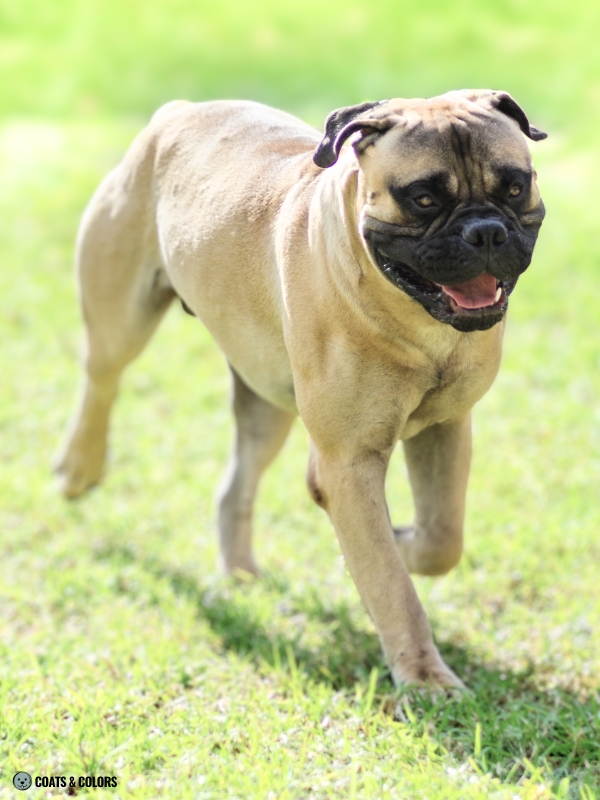
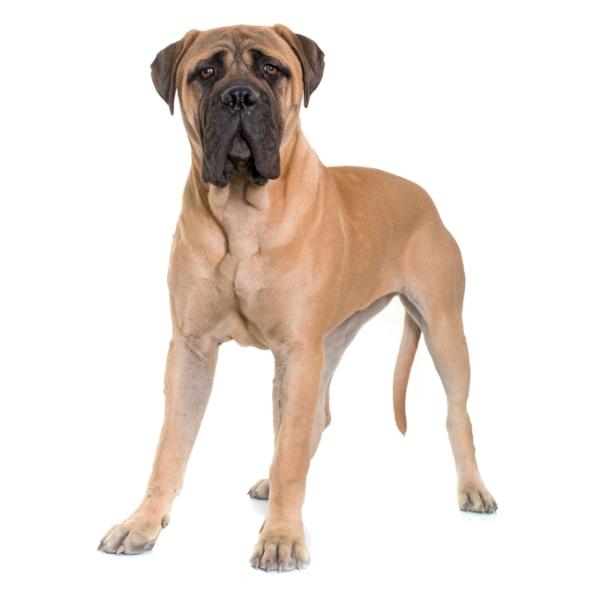

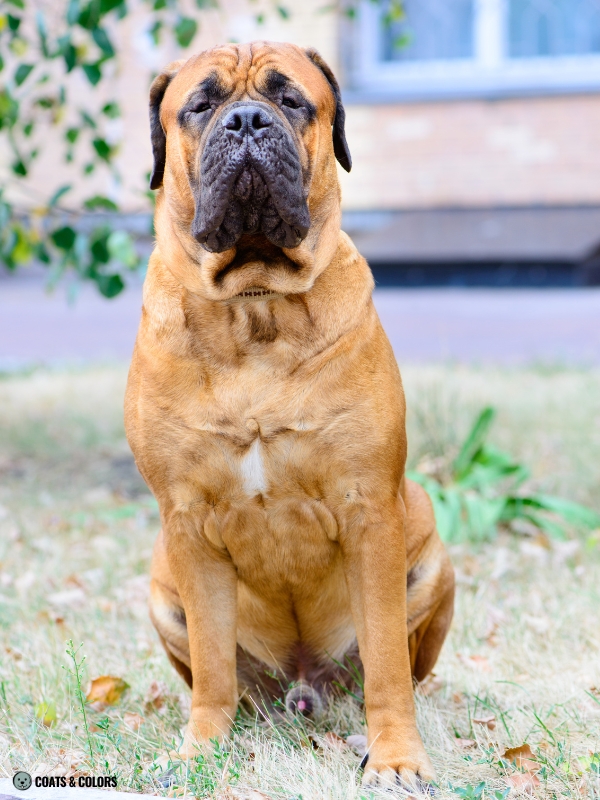

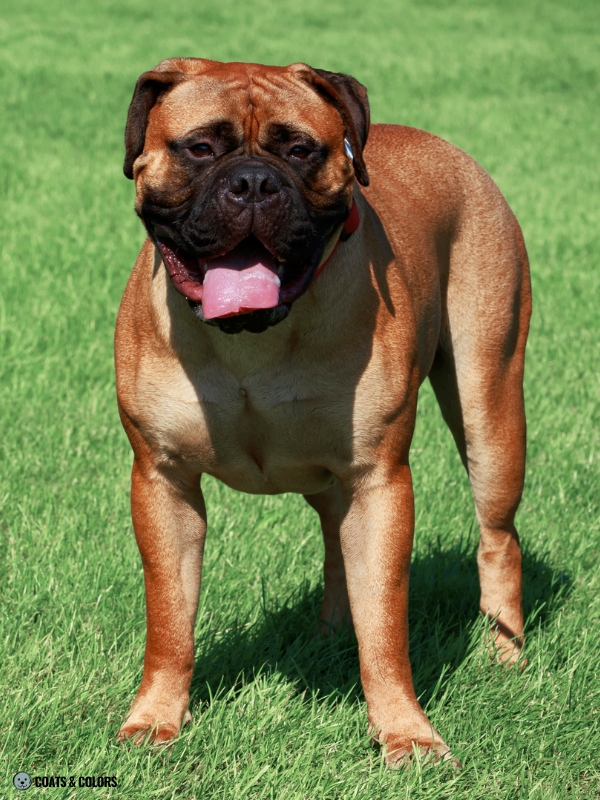
The American Bullmastiff Association tries to define ideal pigment colors.
As is common with many Molosser breeds, they use the terms “light brown” and “reddish brown” to describe what are actually lighter shades of red pigment:
…Fawn can range from a very light brown to a reddish brown.
American Bullmastif Association
Red can range from a light red-fawn to a dark, rich red.
White Spotting
There is no white spotting trait in Bullmastiffs.
Except for a very small white spot on the chest, white marking is considered a fault.
Boxer AKC breed standard
A slight white marking on chest permissible.
Boxer FCI breed standard
Some dogs might still show some residual white.
But any white that goes beyond a small white chest spot is considered as “excessive white“.

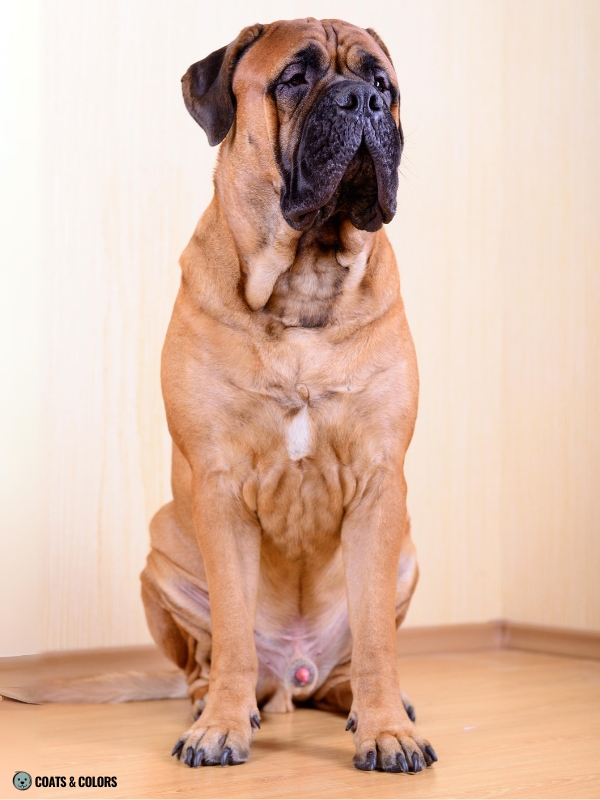

Eye Color
Bullmastiffs usually have dark brown or hazel eyes.
Light or piercing yellow eyes do happen but are considered highly undesirable.
Nose Color
Since Bullmastiffs produce black eumelanin, their nose is also black.
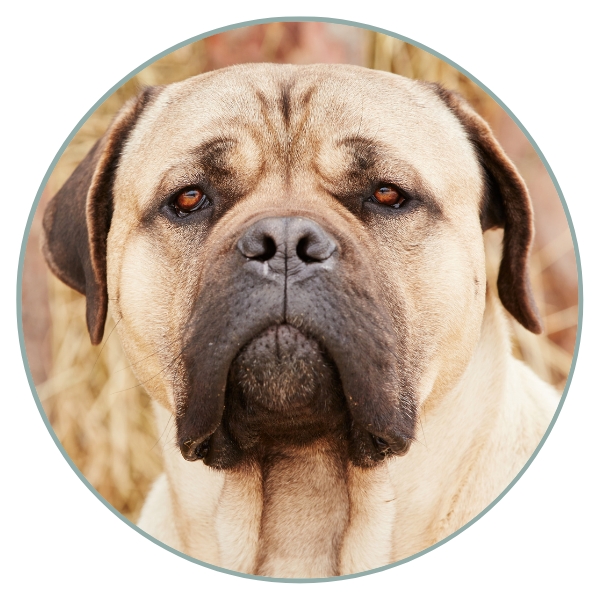
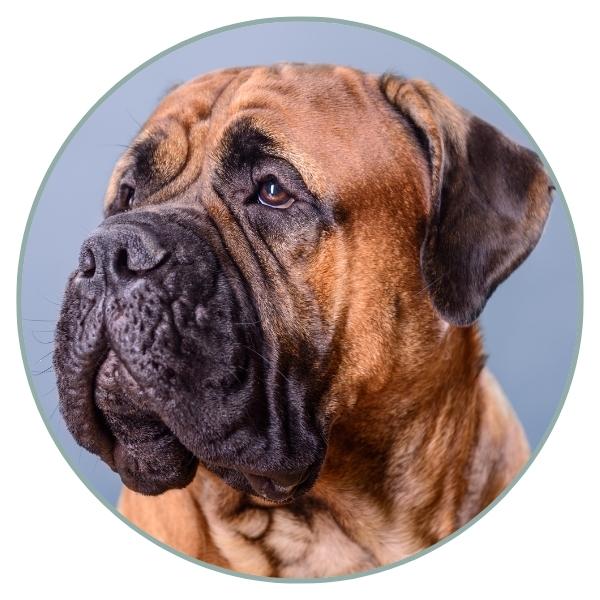
Bullmastiff Patterns
Standard Bullmastiff coat colors are sable or brindled sable.
-
Em/Em-
Ay/Ay-
ky/ky-
sable
-
-
kbr/--
brindle
-
-
-
A Locus
This breed only ever comes in sable.
The majority of dogs have a clear sable (Ay) pattern.
This means that apart from their mask, they have no black shading in their adult coat.
It’s normal for sable dogs to be born with some darker puppy shading which should fade over time.
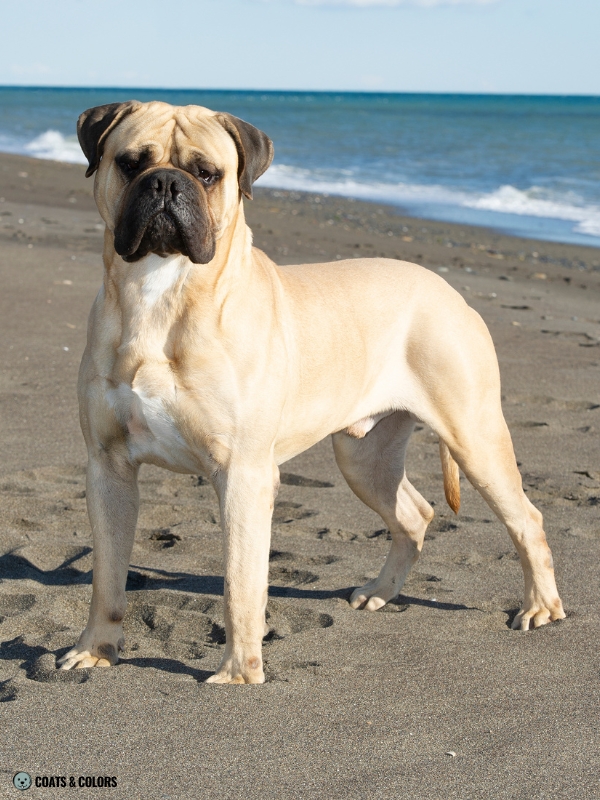

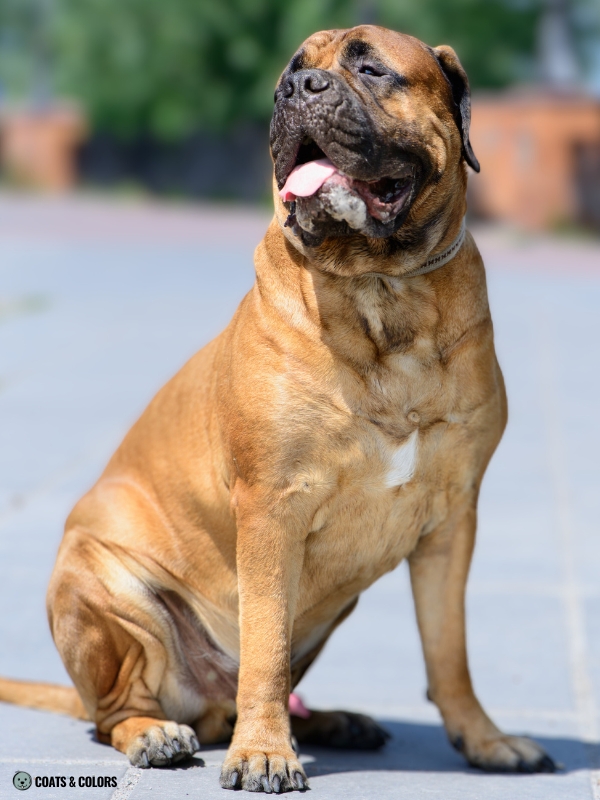
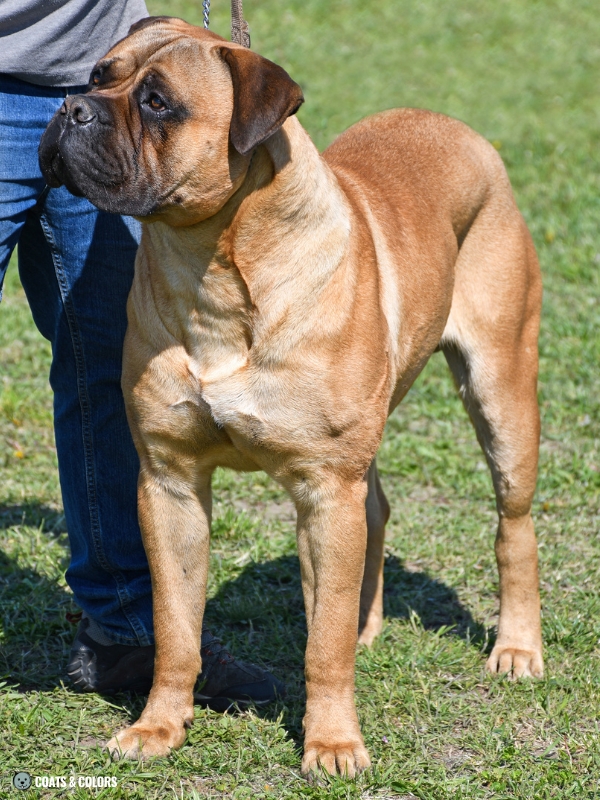
However, a small number of Bullmastiffs seem to express shaded sable (Ays). These dogs keep some of the black hair banding or tips along their back.
This is not a desirable trait, the FCI breed standard asks for “colour to be pure and clear“.
K Locus
The Bullmastiff’s sable coat either is unaffected (ky/ky) or has a brindle pattern (kbr/-) on top.
Since brindle causes black stripes on top of the sable background, brindle Bullmastiffs come in shades from “fawn brindle” to “red brindle“, depending on their base color.
Also, the brindling can be moderate to dense.


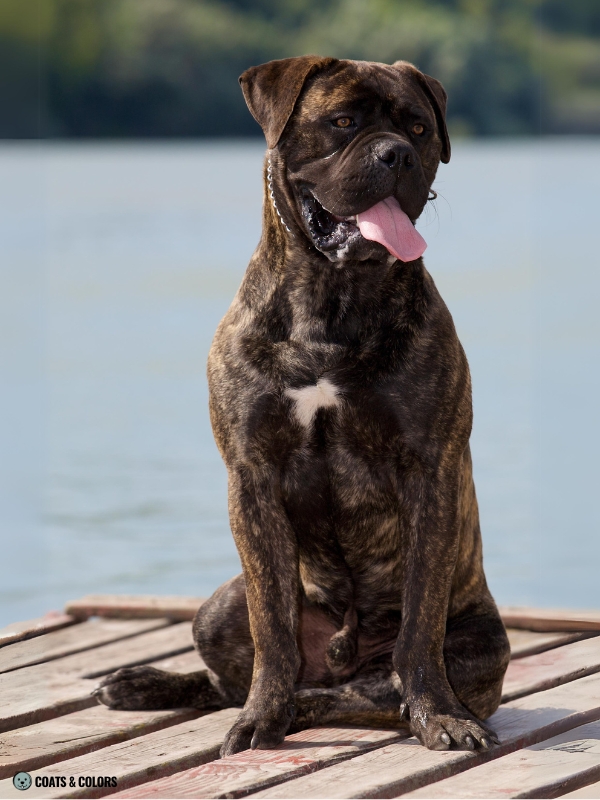
Interestingly, I found no reference to the ideal amount of brindling.
There are dark brindle Bullmastiffs as well as dogs with moderate or sparse brindle markings.
The Bullmastiff originally worked as a night dog. Darl color was beneficial. Brindle was the original desired color as it was the best camouflage. There is no present day color preference.
Illustrated Standard
E Locus
All Bullmastiffs are expected to have a black mask (Em/Em).
Black muzzle essential, toning off towards eyes, with dark markings around eyes contributing to expression.
Boxer FCI breed standard
In Bullmastiffs, the mask typically covers the muzzle and reaches up to the eyes. It’s normal for sable dogs with a black mask to also have darker ear shading.
The mask is not that obvious in desnely brindled dogs.
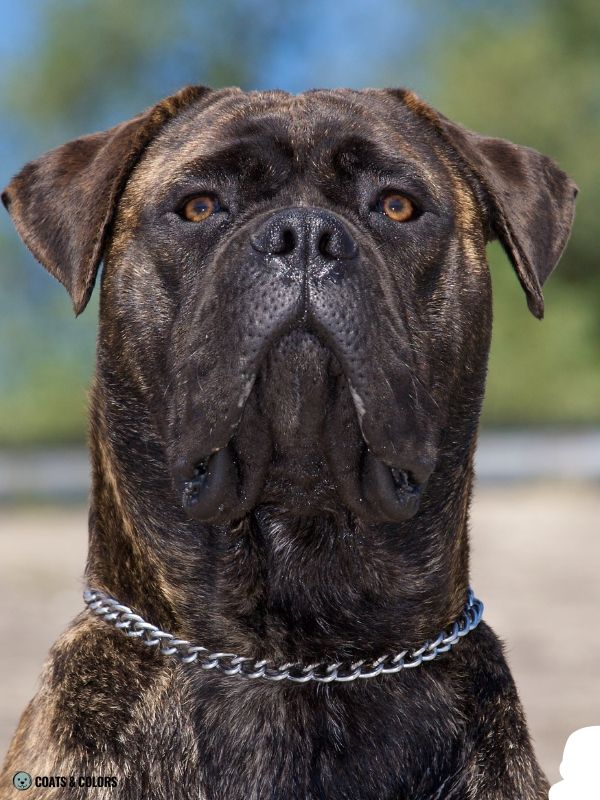


Sometimes, the mask extends further and causes some extra black on the head, chest, legs or paws.
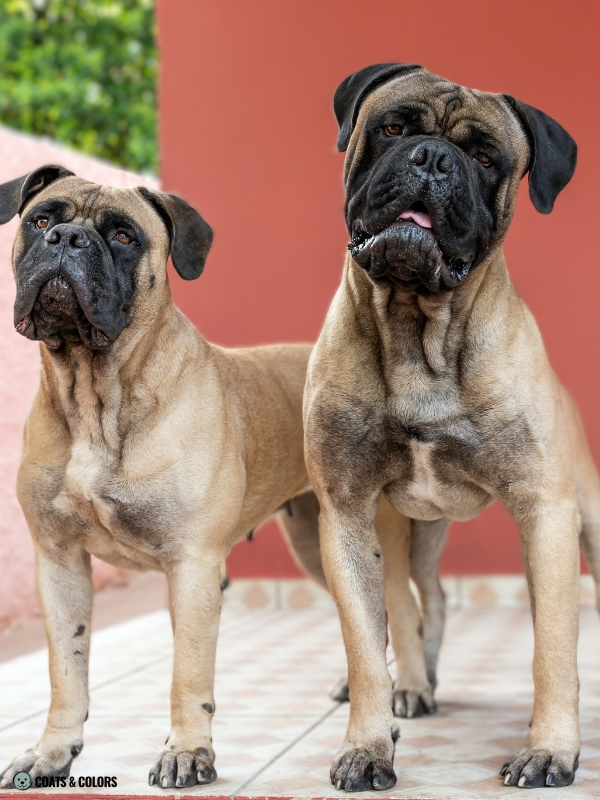
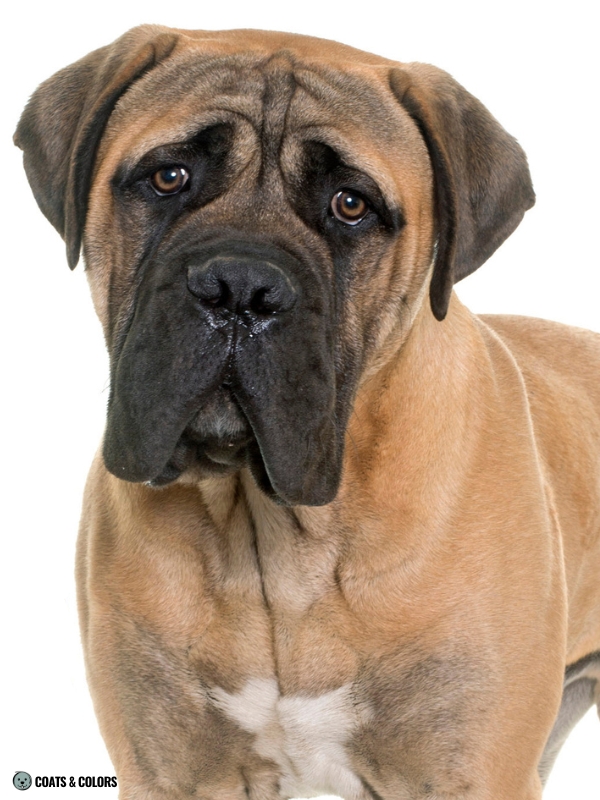
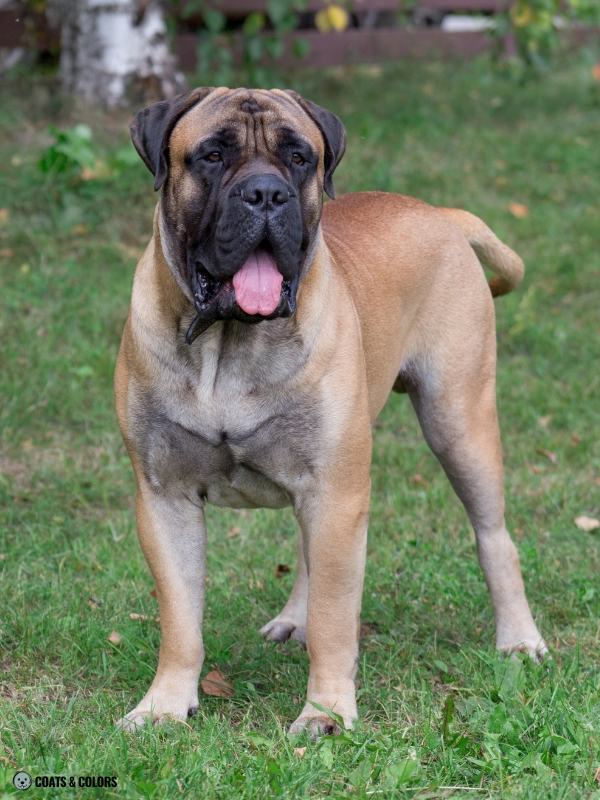
Surprisingly, the wild type variant (E) is also present in the breed[3].
Meaning, some dogs might end up with two copies and no mask (E/E).
Mismarks
There are not too many non-standard colors in the Bullmastiff. However, some gene variants floating around in the gene pool could cause less desirable patterns.
Extended black masks are caused by unknown modifiers.
Non-masked dogs happen when a dog ends up with two wild type E alleles (E/E). Masked dogs can be carriers (Em/E) and breeding two carriers gives each puppy a chance of 25% to end up with no mask.
Black sable shading happens when a dog expresses shaded sable (Ays/Ays).
And the amount of black overlay a dog with this pattern has varies greatly. Bullmastiffs with a clear sable pattern can carry shaded sable (Ay/Ays).
Recessive variants for brown eumelanin (b) are rare. Breeding two carriers (B/b) might produce brown-nosed puppies with a brown-based sable pattern (that look like a Dogue the Bordeaux).
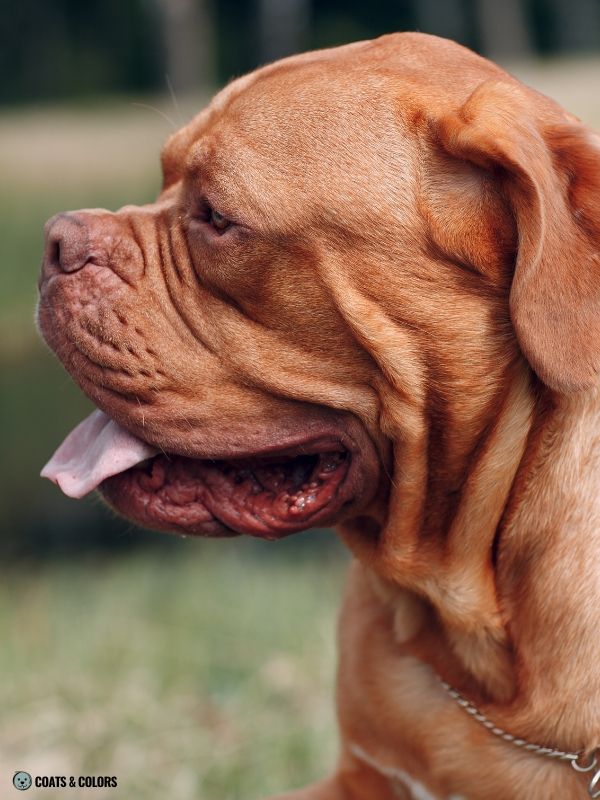
Learn More
Links
[1] American Kennel Club (AKC): Official Standard for the Bullmastiff (pdf)
[2] Fédération Cynologique Internationale (FCI): Bullmastiff Breed Standard
[3] Dreger et al. (2019). True Colors: Commercially-acquired morphological genotypes reveal hidden allele variation among dog breeds, informing both trait ancestry and breed potential. PLoS ONE 14(10): e0223995. https://doi.org/10.1371/journal.pone.0223995
[4] American Bullmastiff Association: Illustrated Breed Standard
[5] Caduff, Bauer, Jagannathan & Leeb (2017). A single base deletion in the SLC45A2 gene in a Bullmastiff with oculocutaneous albinism. Animal Genetics 48. https://doi.org/10.1111/age.12582

Hi! I’m Steffi. I am a biologist and a big time dog nerd. You are curious about coat color genetics? You’ve come to the right place! Read more.



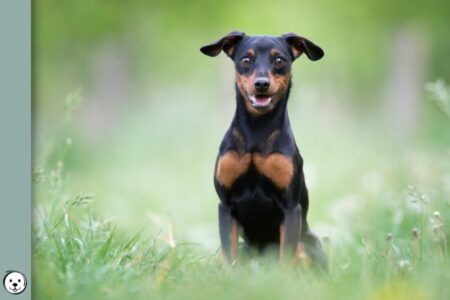
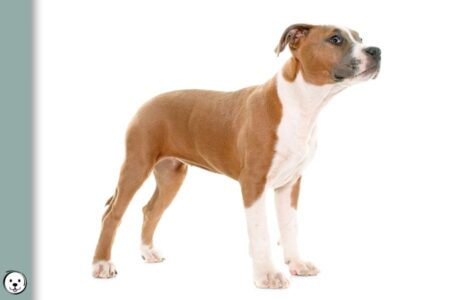

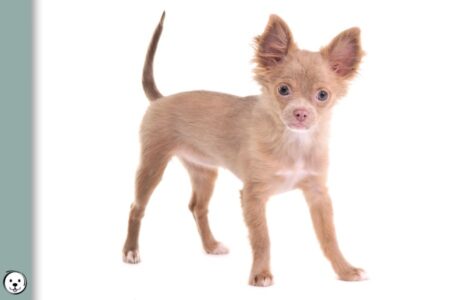

1 thought on “Bullmastiff Color Chart”
Comments are closed.